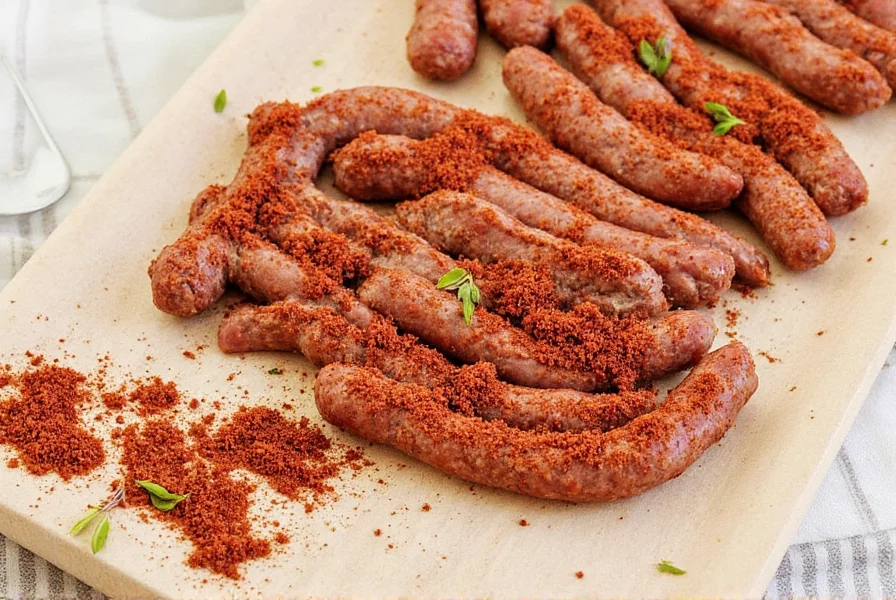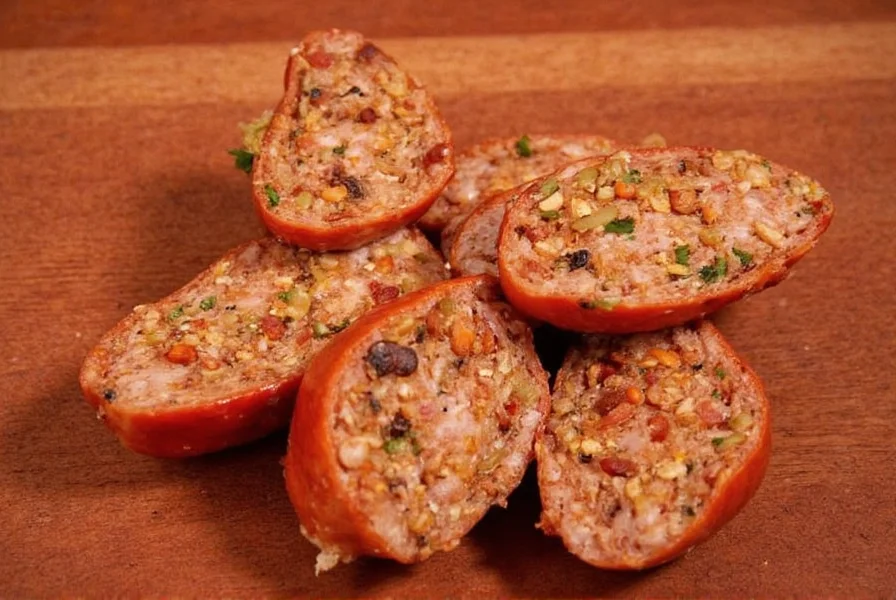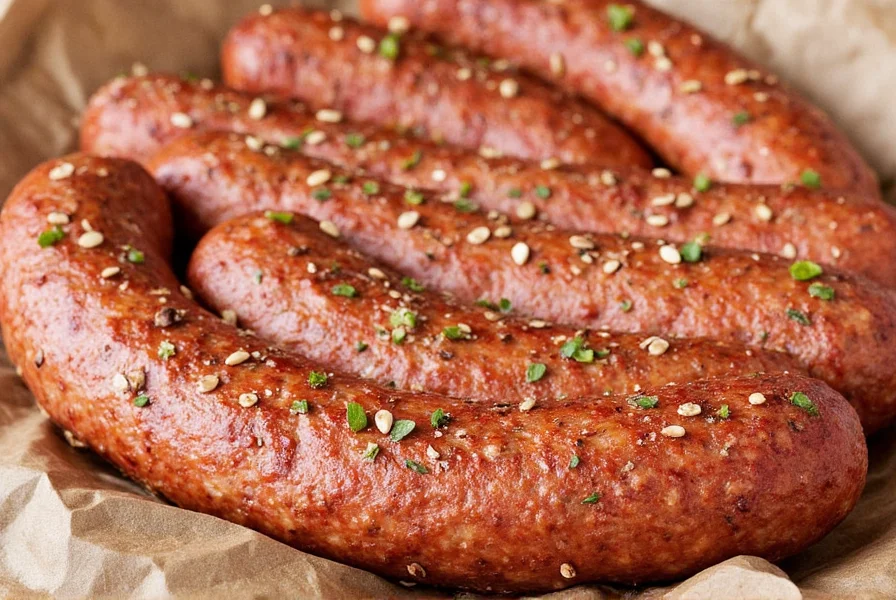Seasoning sausage correctly is the key to unlocking rich, flavorful meat. This step-by-step guide covers everything you need to know—from essential spices and ratios to common mistakes to avoid—so you can create perfect sausage every time.

Whether you're grilling brats at a backyard BBQ or crafting artisanal sausages from scratch, the right seasoning makes all the difference. Let's dive into the details.
Table of Contents
- Why Sausage Seasoning Matters
- Flavor Profiles: Finding Your Sausage Style
- Top 7 Sausage Seasoning Tips You Need to Know
- Buying Guide: Best Spices and Seasoning Blends
- Frequently Asked Questions
- Conclusion
Why Sausage Seasoning Matters
Seasoning isn't just about taste—it's about balance. A good sausage blend needs salt to draw out flavor, spices to add depth, and sometimes sugar or vinegar to cut through fat. Too little seasoning? Bland, forgettable sausage. Too much? Overwhelming and off-putting.

The key is understanding which flavors work together—and which don't. Let's dive into how to build that perfect sausage seasoning blend.
| Style | Main Ingredients | Best For |
|---|---|---|
| Italian Sausage | Fennel, garlic, paprika, red pepper flakes | Pizza toppings, pasta dishes |
| Bratwurst | Marjoram, nutmeg, ginger, caraway | Beer steams, outdoor grilling |
| Andouille | Black pepper, thyme, garlic, cayenne | Cajun dishes like gumbo and jambalaya |
| Chorizo | Paprika, garlic, oregano, vinegar | Tacos, stews, rice dishes |

Top 7 Sausage Seasoning Tips You Need to Know
Ready to become a sausage-seasoning wizard? Here are seven practical, pro-level tips to help you nail that flavor every time.
1. Salt is Your Foundation
You can't make great sausage without salt. It enhances flavor, helps extract proteins, and creates that juicy bite. Aim for about 1.5–2% salt by weight of the meat. That's roughly 1 tablespoon per pound of meat.

2. Mix Dry Before Wet
Mix all dry ingredients (salt, spices, herbs) before adding any liquid components like wine, beer, or vinegar. This ensures even distribution and avoids clumping.
3. Use Fresh Spices
Old spices = flat flavor. Ground spices last only 6–12 months. If it doesn't smell strong, it won't taste strong. Store in airtight containers away from heat and light.
4. Balance Sweet & Heat
Add a touch of sweetness (like brown sugar or maple syrup) to balance spicy elements (cayenne, crushed red pepper). Think about the contrast in hot Italian sausage—it's got both kick and warmth.
5. Fat is Your Friend
Spices love fat. They bind to fats more effectively than lean meat. Make sure your meat mix has around 20–30% fat content. Pork shoulder is a classic choice because of its ideal marbling.
6. Taste as You Go
Make a small test patty and fry it up before stuffing all your sausages. Adjust seasoning based on what you taste—this is the easiest way to avoid under- or over-seasoned results.
7. Rest After Mixing
Let your seasoned meat rest in the fridge for at least an hour (preferably overnight). This gives the spices time to meld and penetrate the meat for deeper flavor.
| Product Name | Main Ingredients | Features | Use Cases | Audience |
|---|---|---|---|---|
| Butcher's Secret Sausage Seasoning Blend | Salt, black pepper, garlic powder, paprika, fennel seed | Perfect for homemade Italian sausage; no fillers, high flavor | Pizza toppings, sausage links, breakfast patties | Home cooks and sausage lovers |
| Smoky Southern BBQ Rub | Brown sugar, smoked paprika, mustard, chili powder | Great for smoking or grilling pork sausage links | Backyard barbecues, picnic platters | Grill masters and weekend warriors |
| Old World Bratwurst Kit | Marjoram, ginger, coriander, caraway | Pre-measured kit for authentic German-style brats | Beer steamed sandwiches, Oktoberfest events | Homebrewers and cultural foodies |
| Spicy Chorizo Blend | Garlic, paprika, oregano, vinegar powder | Rich, smoky flavor with bold heat | Tacos, rice bowls, stew bases | Mexican cuisine fans and fusion chefs |
| Herb Garden Sausage Mix | Thyme, rosemary, sage, onion powder | Natural and earthy; ideal for breakfast or holiday fare | Breakfast scrambles, Thanksgiving stuffing | Comfort food lovers and brunch hosts |

How to Choose the Right One
- Check ingredient lists: Avoid unnecessary fillers and preservatives if possible.
- Match the cuisine: Use a blend designed for the style of sausage you're making.
- Consider customization: Some kits allow you to adjust spice levels or add personal touches.
- Read reviews: Look for feedback from fellow sausage makers or home chefs.
Frequently Asked Questions About Sausage Seasoning
How much seasoning should I use per pound of meat?
For most sausage recipes, you'll want to use about 2-3% seasoning by weight of your meat. This typically translates to approximately 1 tablespoon of salt and 1.5-2 tablespoons of other seasonings per pound of meat. However, this can vary based on the specific recipe and your personal taste preferences. Always remember to taste a small test patty before making your entire batch.
What's the most important seasoning ingredient for sausages?
Salt is the most crucial seasoning ingredient for sausages. It not only enhances flavor but also helps extract proteins that create the proper texture and bind the sausage together. Without adequate salt (typically 1.5-2% by weight of the meat), even the best spice blends won't produce great results. After salt, the most important ingredients vary by sausage style - fennel for Italian, marjoram for bratwurst, paprika for chorizo, etc.
Can I use fresh herbs instead of dried spices in my sausage seasoning?
Yes, but with some considerations. Fresh herbs have higher water content and milder flavor intensity compared to dried herbs. As a general rule, use three times the amount of fresh herbs as you would dried. For example, if a recipe calls for 1 teaspoon dried thyme, use 1 tablespoon fresh thyme. Keep in mind that some fresh herbs (like rosemary) can create small green specks in your sausage that might not be visually appealing to all consumers.
How long should I let the meat rest with seasoning before stuffing?
At minimum, let your seasoned meat rest in the refrigerator for 1-2 hours. However, for optimal flavor development, 12-24 hours is ideal. This resting period allows the salt to dissolve some proteins, creating a sticky paste that helps bind the sausage together, and gives the spices time to penetrate the meat for more even flavor distribution. Don't exceed 48 hours though, as the texture may become too soft.
What are the most common sausage seasoning mistakes to avoid?
The most common mistakes include: 1) Not using enough salt (essential for flavor and texture), 2) Using stale spices (ground spices lose potency after 6-12 months), 3) Not tasting a test patty before making the entire batch, 4) Adding liquid ingredients too early (causes uneven seasoning distribution), 5) Using meat with insufficient fat content (spices bind to fat), and 6) Rushing the resting period after mixing (prevents flavor development).
Can I substitute ingredients in traditional sausage seasoning blends?
Yes, but be mindful of the role each ingredient plays. For example, in Italian sausage, fennel is essential to the characteristic flavor, but you could adjust the amount to suit your taste. Paprika can often be substituted with smoked paprika for a different dimension. If avoiding certain ingredients for dietary reasons, research flavor profiles to find suitable alternatives. Just remember that major changes will create a different type of sausage rather than the traditional version.
How do I know if I've seasoned my sausage properly?
The only reliable way to know is to make a small test patty, cook it, and taste it. Properly seasoned sausage should have balanced flavors where no single seasoning dominates (unless intended, like in spicy varieties). The salt should enhance but not overwhelm, spices should be present but not harsh, and there should be harmony between sweet, savory, and any heat elements. If something feels missing or too strong, adjust accordingly before making your entire batch.
Conclusion
Seasoning for sausage is part art, part science—but with the right approach, anyone can master it. Whether you're blending your own spices or grabbing a trusted pre-mixed blend, remember that balance, freshness, and experimentation are key.

Now that you've got the secrets to sensational sausage seasoning, go forth and flavor boldly. Your next batch could be legendary.
Happy seasoning!











 浙公网安备
33010002000092号
浙公网安备
33010002000092号 浙B2-20120091-4
浙B2-20120091-4